Over the past two decades, data platforms have gone through several evolutions, yet the fundamental problems remain unsolved. And in the age of AI, these problems have now become enormous roadblocks to successful enterprise transformation.
The Early Days
Data platforms began as tightly coupled systems where compute and storage lived together in monolithic relational databases. Business logic was embedded in reporting code, which worked well until data volumes exploded.
The Rise of ETL and Distributed Systems
As online data grew, monolithic databases hit their limits. Federated and clustered databases emerged, along with the first wave of ETL (Extract, Transform, Load). Distributed systems and the CAP theorem became the new norm. Storage got cheaper, compute became decoupled, and hyperscale environments enabled organizations to store and process vast amounts of data with ease.
The Consequences
With storage abundant and compute powerful, organizations began hoarding data and running large-scale transformations without much consideration for ROI. This led to:
- Excessive complexity in data pipelines
- Lack of canonicalization, creating multiple “versions of truth”
- Erosion of trust in data
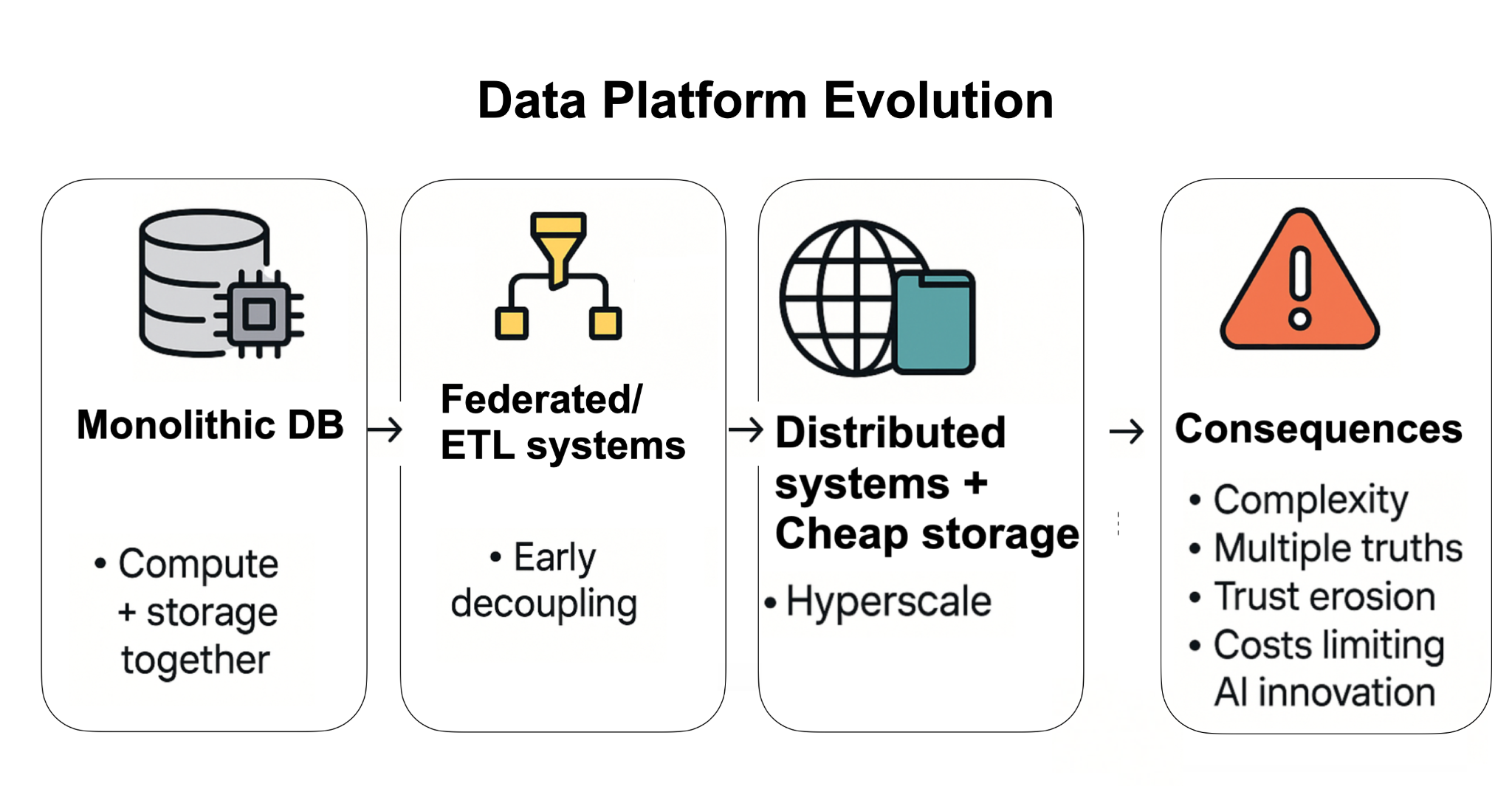
Where We Are Today
The modern data ecosystem has grown enormously in both scale and complexity. Data producers now come in many forms, from consumer-facing applications and third-party integrations to user engagement trackers and they generate data in every format imaginable: structured, semi-structured, and unstructured.
On the other side, data consumers have also expanded their scope of needs, ranging from batch aggregations and near real-time analytics to executive dashboards, ad hoc insights, and feature engineering for machine learning to facilitate direct AI queries.
At the center of this system, the data platform serves as the hub that ingests, transforms, and delivers data between producers and consumers. However, the way these platforms have evolved has created significant new challenges. What was once a tightly coupled system has fractured into a collection of specialized tools and services. Data quality, governance, discovery, storage, and compute are now often handled by separate products or teams, stitched together in ways that create complexity rather than simplicity.
While decoupling storage and compute has brought flexibility–thus allowing organizations to swap engines or scale components independently– it has not solved the more fundamental problems of data trust, consistency, and systemic efficiency.
Meanwhile, innovation has largely centered on making life easier for data consumers. Tools such as notebooks and self-service analytics platforms have made it faster to move from prototype to production. Yet these consumer-side conveniences sit atop underlying foundations that remain fragile, inconsistent, and costly to operate.
In short, today’s data platforms have optimized for usability at the edges while leaving the deeper issues - trust, coherence, and sustainable cost structures unresolved. This is the gap that WALT is designed to close.
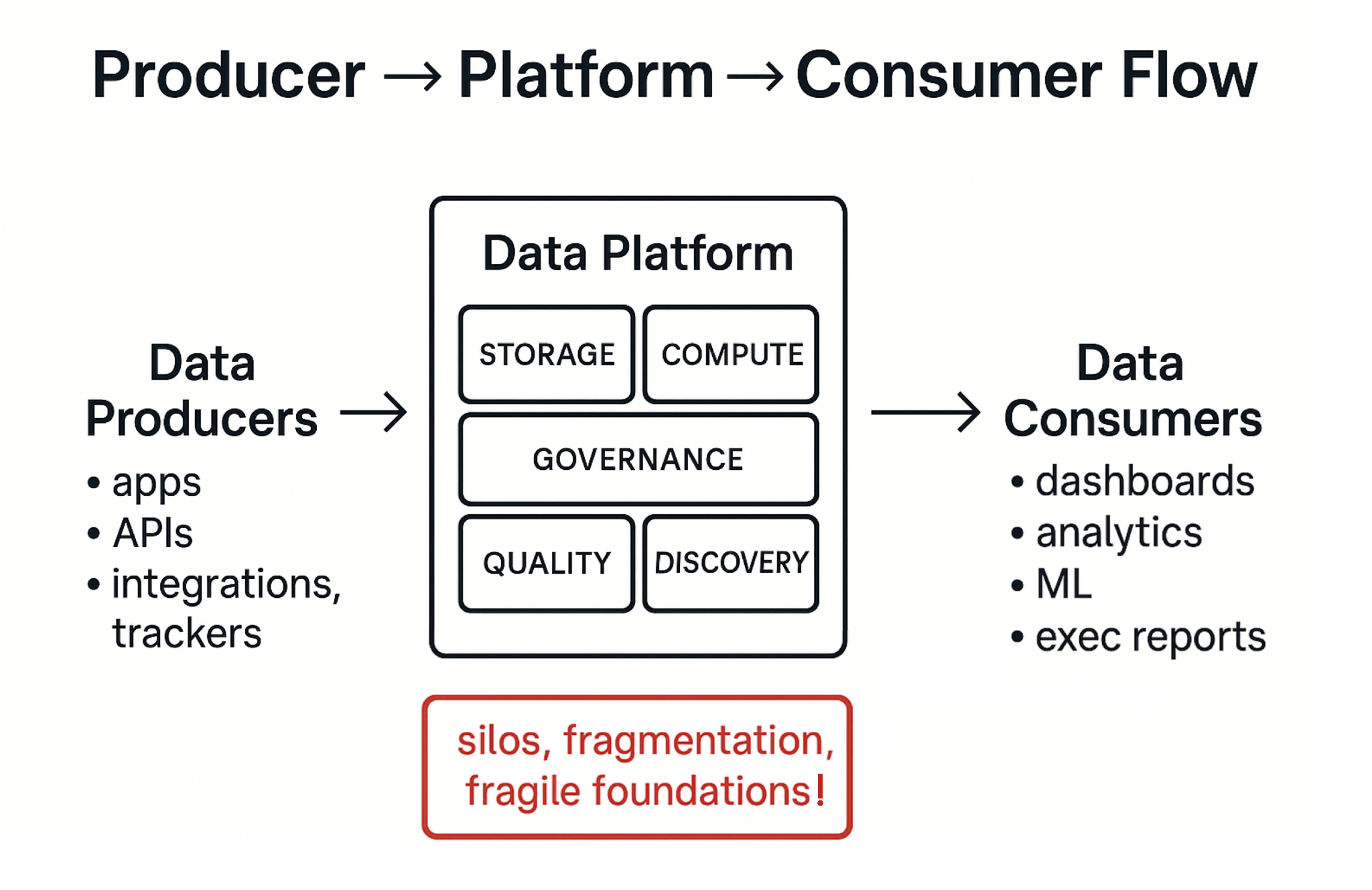
The Solution: WALT – Rethinking the Data Platform
As AI takes center stage, we have a unique opportunity to fundamentally rethink how data platforms function. Traditional platforms have been optimized primarily for consumers of data. WALT proposes a bold shift: moving closer to the producers of data.
This shift unlocks a series of advantages that redefine the paradigm of enterprise data platforms:
First and Last Mile of Data
By embedding itself near the source of data generation, WALT becomes both the first and last mile of the data journey. This proximity to the data producers, combined with the visibility into data consumption patterns, enables platforms to anticipate and autonomously generate the data products that organizations need.
From Requirement-Driven to Pattern-Driven Products
Today, data products are built through requirement gathering and endless iterations, often becoming harder to extend as they mature. With WALT’s “shift left” approach, data products emerge autonomously based on actual consumption patterns. Changes become easier, faster, and more adaptive to organizational needs.
Agentic Data Platform
Trust in data has eroded as organizations scaled rapidly without consistent building blocks or seamless integration. WALT addresses this by operating through a network of specialized agents, each responsible for a core component of the platform (e.g., governance, lineage, observability, pipelines). These agents are decoupled yet tightly integrated, ensuring the system functions in unison while maintaining flexibility and resilience.
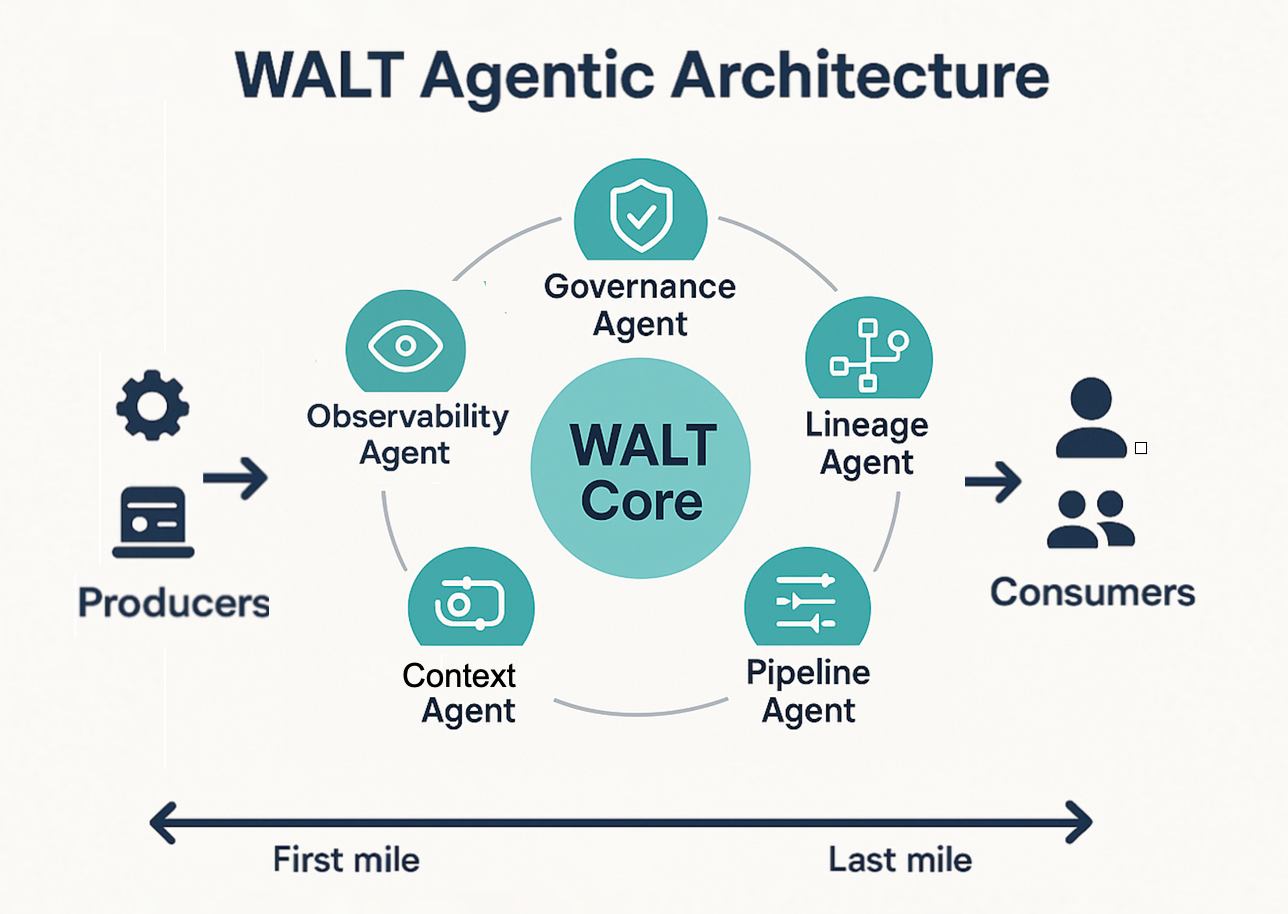
Vendor-Agnostic by Design
Unlike traditional monolithic stacks, WALT is vendor agnostic. It adapts to an organization’s existing technologies, tools, and frameworks, building knowledge graphs across them. For new data products, WALT autonomously selects the most suitable technology, while seamlessly integrating with pre-existing systems. This flexibility allows organizations to migrate between vendors without disruption — eliminating lock-in and future-proofing the platform.
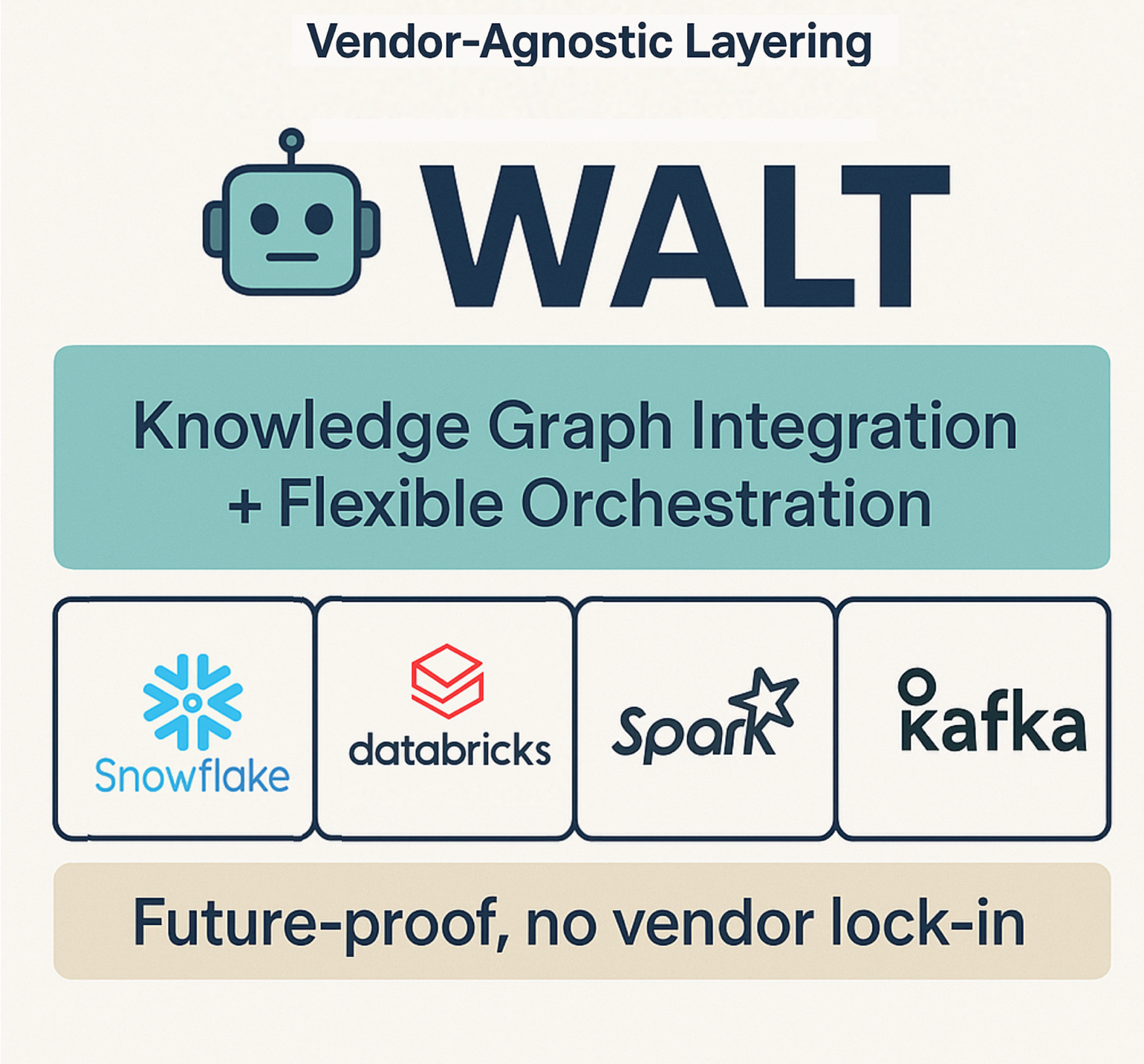
The Next Leap in Data: From Search to Prompt
Every major shift in technology begins with how we find things.
First came portals - we browsed, clicked, and hoped to land somewhere useful.
Then came search - suddenly, we could ask and receive, at scale.
Today, with LLMs, we don’t just search anymore , we converse. We describe our intent, and the system does the rest.
But our data systems are still living in the old world.
Teams spend weeks piecing together pipelines, models, and dashboards just to answer a single question. Every cycle starts with discovery and ends in frustration - a loop of manual effort built for a pre-AI era.
It’s time for data to evolve just as the Internet did.
WALT brings data into the age of intent.
It replaces the traditional “search and build” model with Build → Prompt → Deliver , where AI understands what the data consumer needs, reasons through the right transformations, and serves insights directly.
The result isn’t just faster, trustworthy answers for data consumers- it’s a new relationship with data.
- One where intelligence is embedded, not assembled.
- Where data doesn’t wait to be queried but it responds.
The future of data isn’t about discovery.
It’s about intelligence that meets you halfway.
And the timing couldn’t be better. AI-native infrastructure is inevitable, and the winners will be those who make data promptable. WALT ensures your data doesn’t wait for the future - WALT defines the future.
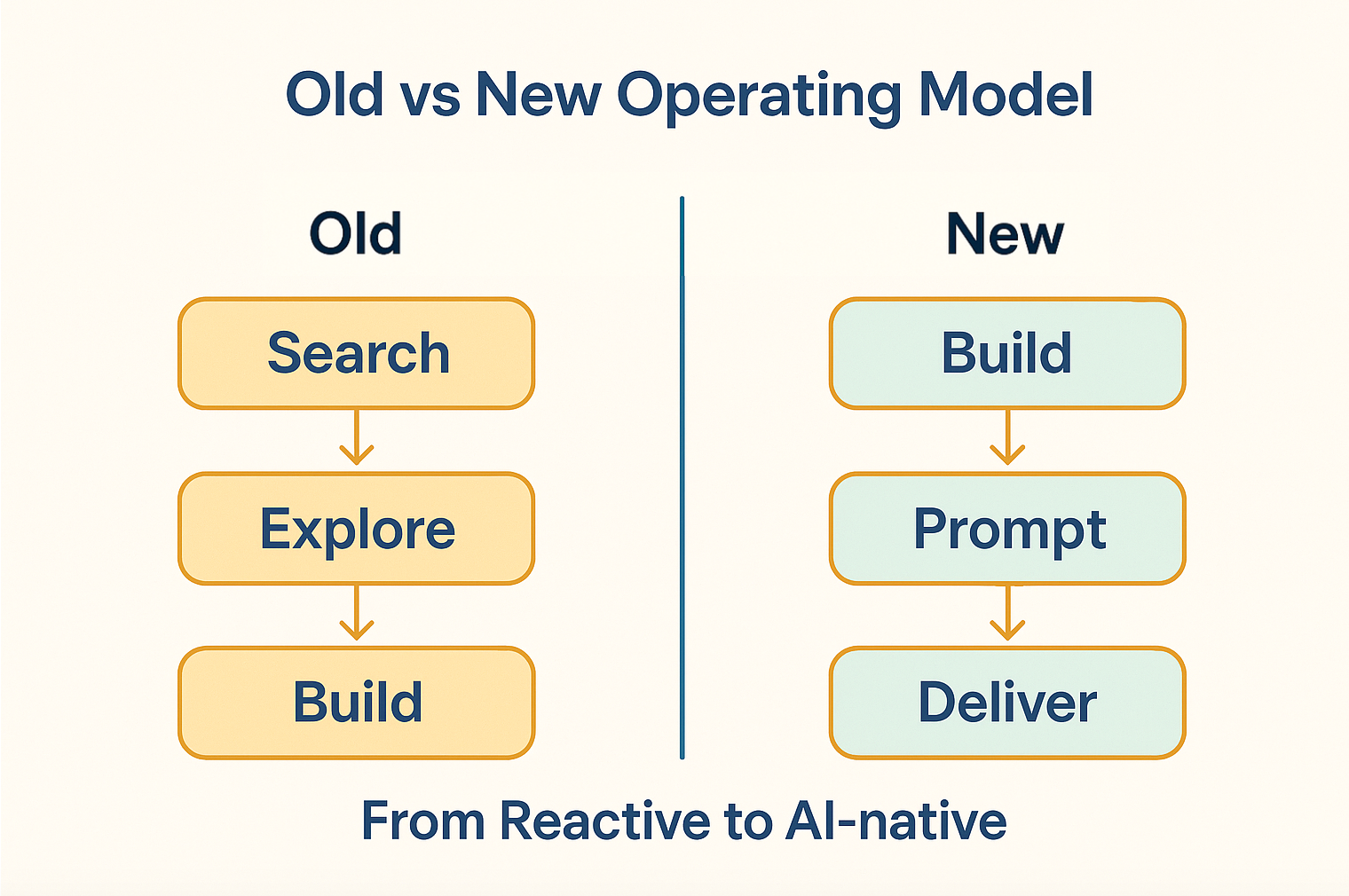
Summary
WALT transforms the data platform from a patchwork of siloed tools into an AI-native, agentic system that is closer to the source of data, more adaptive to business needs, and free from vendor lock-in. By rethinking the foundation of how data platforms are built and operated, WALT delivers a future where organizations can build faster, trust more, and adapt seamlessly.
A special thanks to all my data engineering friends who helped with this article.
—---







